Anemia
- What is anemia?
- What causes anemia?
- Types of anemia
- Symptoms of Anemia
- Treatment
- Prevention
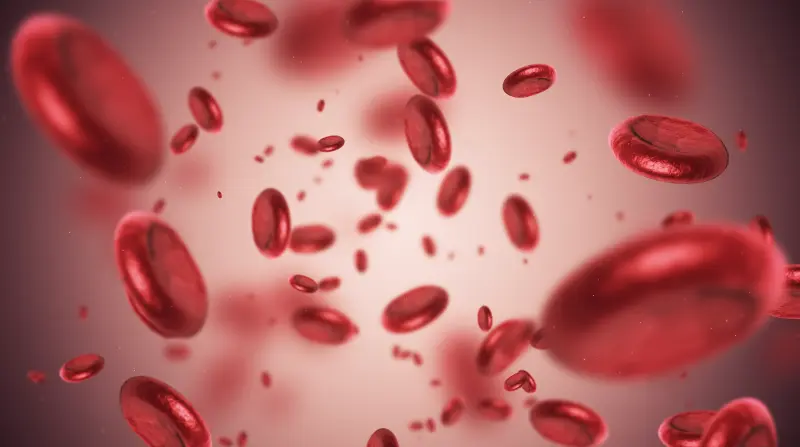
- What is anemia?
Anemia is a condition in which there is lack of enough healthy red blood cells to carry adequate oxygen to body’s tissues. Having anemia, also referred to as low hemoglobin, can make you feeling tired and weak. There are many forms of anemia, each with its own cause. Anemia can be temporary or long term and can range from mild to severe. In most cases, anemia has more than one cause.
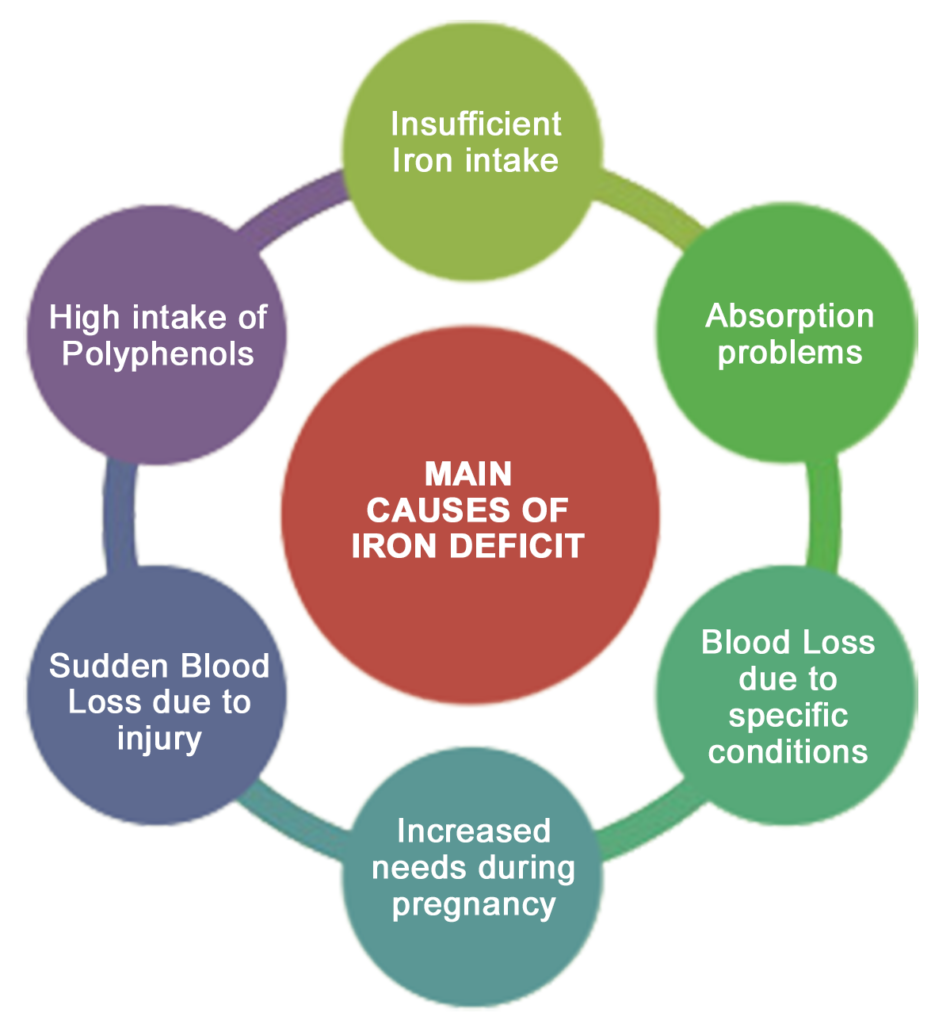
- What causes anemia ?
Anemia can be due to a condition present at birth (congenital) or to a condition you develop (acquired). Anemia occurs when your blood doesn’t have enough red blood cells.
This can happen if:
- the body doesn’t make enough red blood cells
- bleeding causes to lose red blood cells more quickly than they can be replaced
- the body destroys red blood cells
- Types of anemia
There are different types of anemia and they have different causes.
- Iron deficiency anemia
- Vitamin deficiency anemia
- Anemia of inflammation
- Aplastic anemia
- Anemias associated with bone marrow disease
- Hemolytic anemia
- Sickle cell anemia
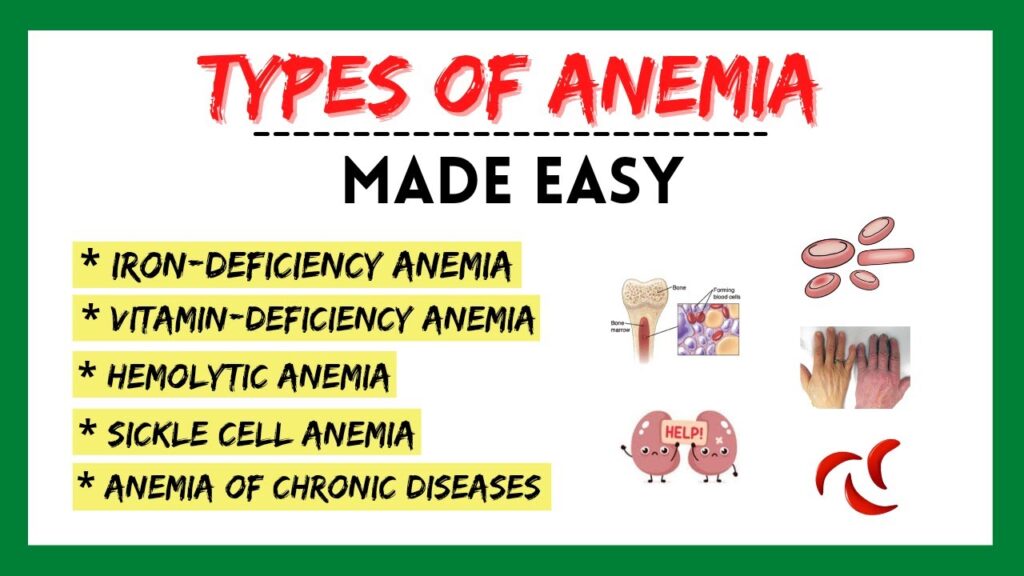
Iron deficiency anemia
This most common type of anemia is caused by a shortage of iron in your body. Your bone marrow needs iron to make hemoglobin. Without adequate iron, your body can’t produce enough hemoglobin for red blood cells.
Without iron supplementation, this type of anemia occurs in many pregnant women. It’s also caused by blood loss, such as from heavy menstrual bleeding; an ulcer in the stomach or small bowel; cancer of the large bowel; and regular use of some pain relievers that are available without a prescription, especially aspirin, which can cause inflammation of the stomach lining resulting in blood loss. It’s important to determine the source of iron deficiency to prevent recurrence of the anemia.
Vitamin deficiency anemia
Besides iron, your body needs folate and vitamin B-12 to produce enough healthy red blood cells. A diet lacking in these and other key nutrients can cause decreased red blood cell production. Some people who consume enough B-12 aren’t able to absorb the vitamin. This can lead to vitamin deficiency anemia, also known as pernicious anemia.
Anemia of inflammation
Certain diseases — such as cancer, HIV/AIDS, rheumatoid arthritis, kidney disease, Crohn’s disease and other acute or chronic inflammatory diseases — can interfere with the production of red blood cells.
Aplastic anemia
This rare, life-threatening anemia occurs when your body doesn’t produce enough red blood cells. Causes of aplastic anemia include infections, certain medicines, autoimmune diseases and exposure to toxic chemicals.
Anemias associated with bone marrow disease
A variety of diseases, such as leukemia and myelofibrosis, can cause anemia by affecting blood production in your bone marrow. The effects of these types of cancer and cancer-like disorders vary from mild to life-threatening.
Hemolytic anemias
This group of anemias develops when red blood cells are destroyed faster than bone marrow can replace them. Certain blood diseases increase red blood cell destruction. You can inherit a hemolytic anemia, or you can develop it later in life.
Sickle cell anemia
This inherited and sometimes serious condition is a hemolytic anemia. It’s caused by a defective form of hemoglobin that forces red blood cells to assume an abnormal crescent (sickle) shape. These irregular blood cells die prematurely, resulting in a chronic shortage of red blood cells.
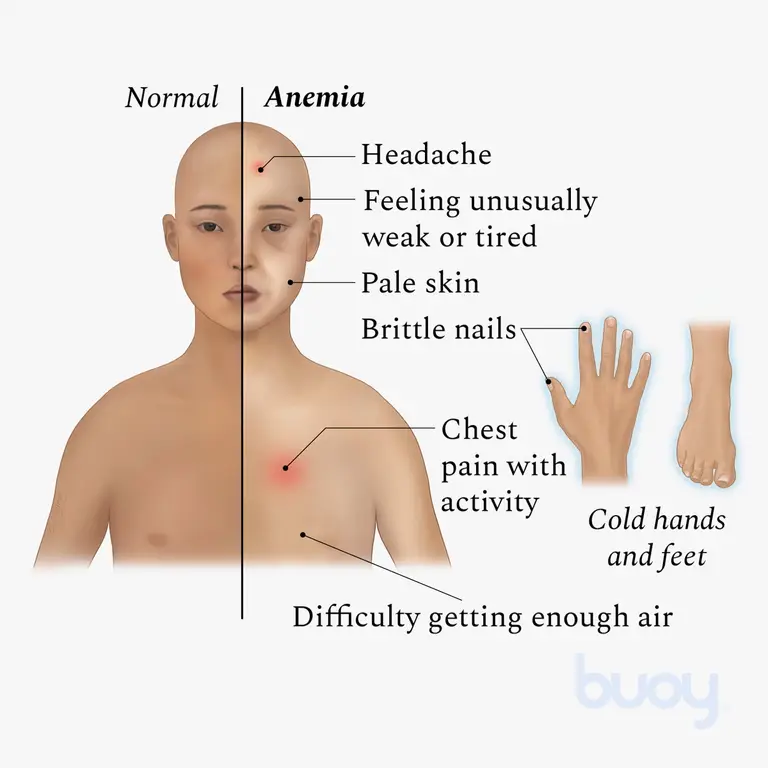
- Symptoms of Anemia
If you have mild anemia, you may not have any symptoms. Symptoms of anemia may develop quickly or slowly, depending on the cause of your anemia. General symptoms that are the same for many types of anemia include:
- Weakness
- Paleness
- Tiredness
- Chills
- Shortness of breath
- Headache
- Dizziness and fainting
- Bleeding
- Yellowing of the skin
- Diagnosis
To diagnose anemia, your doctor may ask you questions about your risk factors and order blood tests or other diagnostic tests. Your doctor may also ask about your medical history, what you eat, and whether other people in your family have been diagnosed with anemia. Your doctor may also do a physical exam to look for symptoms of anemia, such as a pale tongue or brittle nails. If you have anemia, your doctor may ask you to visit a hematologist (a doctor who specializes in blood diseases).
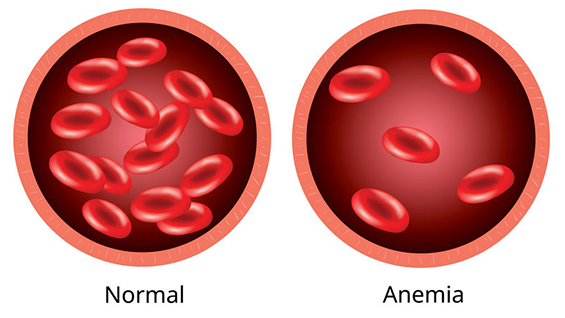

- Treatment
Treatments for anemia vary and depend largely on the cause, the type of anemia. Treatment usually involves treating the anemia itself and treating the causes of the anemia. Treatment may be limited to taking certain supplements or require serious medical interventions. Some types of anemia can be prevented by eating a healthy diet.
Anemia treatment depends on the cause.
- Iron deficiency anemia. Treatment for this form of anemia usually involves taking iron supplements and changing your diet. For some people, this might involve receiving iron through a vein.
If the cause of iron deficiency is loss of blood — other than from menstruation — the source of the bleeding must be located and the bleeding stopped. This might involve surgery.
- Vitamin deficiency anemias. Treatment for folic acid and vitamin C deficiency involves dietary supplements and increasing these nutrients in your diet.
If your digestive system has trouble absorbing vitamin B-12 from the food you eat, you might need vitamin B-12 shots. At first, you might have the shots every other day. Eventually, you’ll need shots just once a month, possibly for life, depending on your situation.
- Anemia of chronic disease. There’s no specific treatment for this type of anemia. Doctors focus on treating the underlying disease. If symptoms become severe, a blood transfusion or injections of a synthetic hormone normally produced by your kidneys (erythropoietin) might help stimulate red blood cell production and ease fatigue.
- Aplastic anemia. Treatment for this anemia can include blood transfusions to boost levels of red blood cells. You might need a bone marrow transplant if your bone marrow can’t make healthy blood cells.
- Anemia associated with bone marrow disease. Treatment of these various diseases can include medication, chemotherapy or bone marrow transplantation.
- Hemolytic anemias. Managing hemolytic anemias includes avoiding suspect medications, treating infections and taking drugs that suppress your immune system, which could be attacking your red blood cells. Severe hemolytic anemia generally needs ongoing treatment.
- Sickle cell anemia. Treatment might include oxygen, pain relievers, and oral and intravenous fluids to reduce pain and prevent complications. Doctors might also recommend blood transfusions, folic acid supplements and antibiotics. A cancer drug called hydroxyurea (Droxia, Hydrea, Siklos) also is used to treat sickle cell anemia.
- Thalassemia. Most forms of thalassemia are mild and require no treatment. More-severe forms of thalassemia generally require blood transfusions, folic acid supplements, medication, removal of the spleen, or a blood and bone marrow stem cell transplant.
- Risk factors
These factors place you at increased risk of anemia:
- A diet lacking in certain vitamins and minerals. A diet consistently low in iron, vitamin B-12, folate and copper increases your risk of anemia.
- Intestinal disorders. Having an intestinal disorder that affects the absorption of nutrients in your small intestine — such as Crohn’s disease and celiac disease — puts you at risk of anemia.
- Menstruation. In general, women who haven’t had menopause have a greater risk of iron deficiency anemia than do men and postmenopausal women. Menstruation causes the loss of red blood cells.
- Pregnancy. Being pregnant and not taking a multivitamin with folic acid and iron, increases your risk of anemia.
- Chronic conditions. If you have cancer, kidney failure or another chronic condition, you could be at risk of anemia of chronic disease. These conditions can lead to a shortage of red blood cells.
Slow, chronic blood loss from an ulcer or other source within your body can deplete your body’s store of iron, leading to iron deficiency anemia.
- Family history. If your family has a history of an inherited anemia, such as sickle cell anemia, you also might be at increased risk of the condition.
- Other factors. A history of certain infections, blood diseases and autoimmune disorders increases your risk of anemia. Alcoholism, exposure to toxic chemicals and the use of some medications can affect red blood cell production and lead to anemia.
Age. People over age 65 are at increased risk of anemia

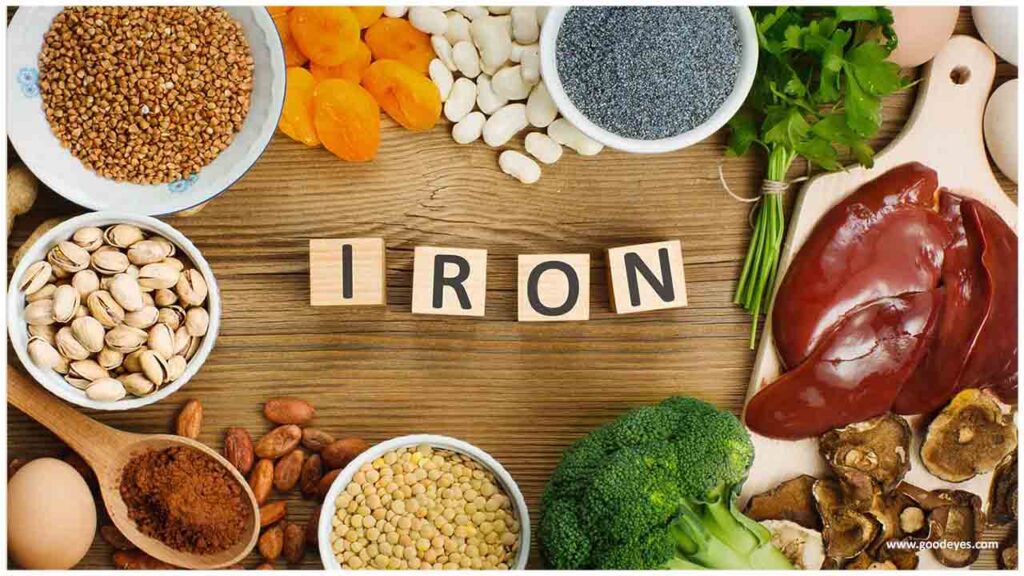
Prevention
Many types of anemia can’t be prevented. But you can avoid iron deficiency anemia and vitamin deficiency anemias by eating a diet that includes a variety of vitamins and minerals, including:
- Iron. Iron-rich foods include beef and other meats, beans, lentils, iron-fortified cereals, dark green leafy vegetables and dried fruit.
- Folate. This nutrient, and its synthetic form folic acid, can be found in fruits and fruit juices, dark green leafy vegetables, green peas, kidney beans, peanuts, and enriched grain products, such as bread, cereal, pasta and rice.
- Vitamin B-12. Foods rich in vitamin B-12 include meat, dairy products, and fortified cereal and soy products.
- Vitamin C. Foods rich in vitamin C include citrus fruits and juices, peppers, broccoli, tomatoes, melons and strawberries. These also help increase iron absorption.

